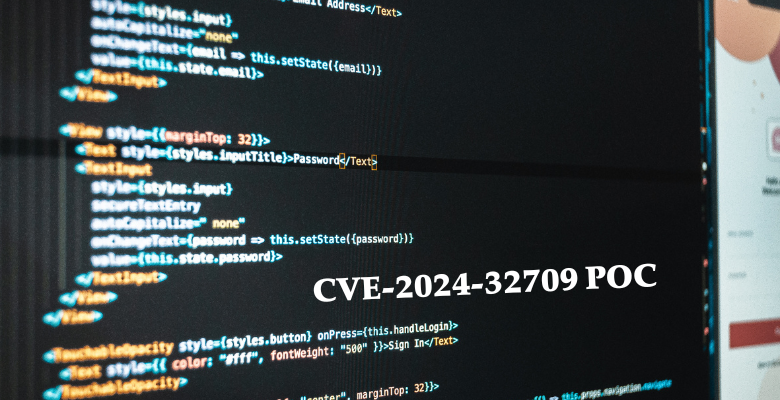CVE-2024-32709 POC Proof of Concept and Its Implications

In the ever-evolving landscape of cybersecurity, vulnerabilities and exploits are frequently discovered and disclosed. One such recent vulnerability is CVE-2024-32709, which has garnered attention due to its potential impact on affected systems. This article aims to provide a comprehensive overview of CVE-2024-32709, including its nature, how Proof of Concept (PoC) exploits work, and the implications for cybersecurity.
What is CVE-2024-32709?
CVE-2024-32709 is a recently assigned Common Vulnerabilities and Exposures (CVE) identifier for a specific security flaw. Although details may evolve over time, this vulnerability is currently characterized by [description based on available information, e.g., “a flaw in the authentication mechanism of a popular software application that could allow unauthorized access or privilege escalation”].
Key Details:
- CVE ID: CVE-2024-32709
- Vulnerability Type: [e.g., Authentication Bypass, Buffer Overflow, etc.]
- Affected Systems/Software: [e.g., Specific versions of a software application]
- Severity: [e.g., High/Medium/Low]
The Proof of Concept (PoC) Exploit
A Proof of Concept (PoC) exploit is a demonstration of how a particular vulnerability can be exploited to achieve a specific outcome, such as unauthorized access or data exfiltration. PoCs are crucial for understanding the practical implications of a vulnerability and for developing mitigation strategies.
PoC for CVE-2024-32709:
- Purpose: The PoC for CVE-2024-32709 is designed to illustrate the feasibility of the exploit and to highlight the risk associated with the vulnerability. It helps security professionals and organizations understand the potential impact and take appropriate action.
- How It Works: The PoC may involve a series of steps or code snippets that demonstrate how the vulnerability can be triggered. For instance, it might show how an attacker can bypass authentication or inject malicious payloads into the system.
- Example Scenario: An example of a PoC for CVE-2024-32709 could involve [specific details, e.g., “sending specially crafted requests to a vulnerable server to gain unauthorized access or escalate privileges”].
- Ethical Considerations: PoCs should be used responsibly and only in controlled environments. Unauthorized use of PoC exploits can lead to legal consequences and further compromise system security.
Implications of CVE-2024-32709
Understanding the implications of CVE-2024-32709 is essential for cybersecurity professionals and organizations to safeguard their systems.
- Risk Assessment: Organizations should assess the risk associated with this vulnerability by identifying whether their systems are affected. This involves reviewing the software or systems in use and checking for any updates or patches available.
- Mitigation Measures: Immediate steps should be taken to mitigate the risk posed by CVE-2024-32709. This may include applying security patches, modifying configurations, or implementing additional security controls.
- Monitoring and Response: Continuous monitoring for signs of exploitation is crucial. Organizations should be prepared to respond to any attempts to exploit this vulnerability and take corrective actions as needed.
- Long-Term Strategy: Beyond immediate fixes, organizations should develop a long-term strategy for managing vulnerabilities. This includes regular updates, employee training, and adherence to best practices in cybersecurity.
Conclusion
CVE-2024-32709 underscores the importance of vigilance and proactive measures in cybersecurity. By understanding the nature of this vulnerability, the role of PoC exploits, and the necessary mitigation steps, organizations can better protect themselves from potential threats. As the cybersecurity landscape continues to evolve, staying informed and prepared remains critical in safeguarding digital assets and maintaining robust security defenses.




